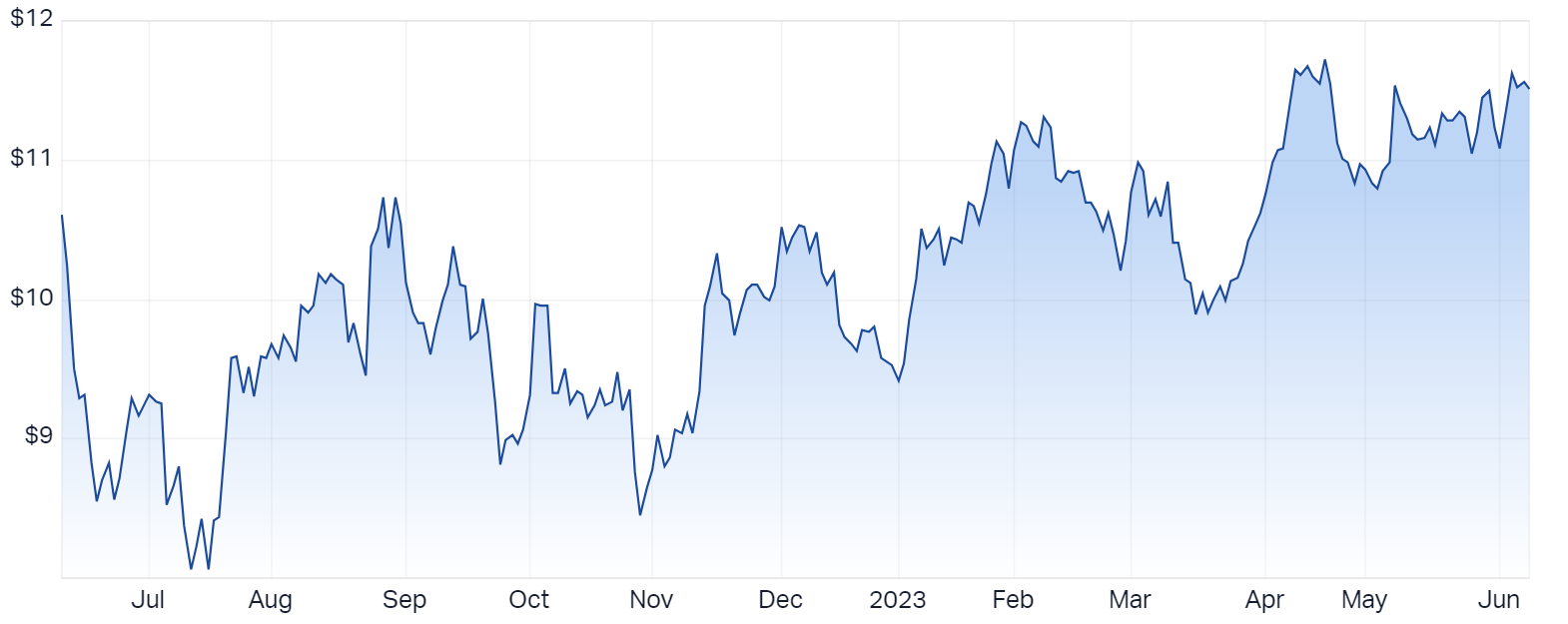Why higher rare earth prices are necessary and one name to play it (that's not Lynas)
The rare earths sector hasn’t been up to much for the past twelve months – Neodymium and praseodymium (NdPr) prices are down around 30% year-to-date and a staple like Lynas (ASX: LYC) is trading where it was two years ago. Is it time for investors to move onto another battery metal or is the sector taking a breather ahead of another breakout?
UBS says rare earth prices have likely bottomed but investors shouldn’t rule out further downside.
“While industry feedback tells us that some cost support is coming in at these levels, we need to build conviction on this given history showing sustained periods of price <US$50/kg,” the analysts said in a note last month.
It’s not just Lynas that’s having a hard time. The Gina Rinehart-backed Arafura (ASX: ARU) is down 50% from its February all-time high and the emerging Hastings Technology (ASX: HAS) is down 57% year-to-date after announcing a staged development plan for its Yangibana rare earths project last month.
The dynamics for ASX-listed rare earths stocks has become increasingly tricky against the otherwise bullish long-term outlook. In this wire and with the help of Perpetual’s Clarke Wilkins, we take a look at the current state of play for rare earths, its outlook and a closer look at an emerging producer (that isn’t Lynas).
Near-term volatility: Chinese stocking and destocking
Rare earth prices are stabilising after a year-to-date drawdown of around 35%. But analysts are having a hard time in building conviction about what the near-term looks like.
"The challenge in any near-term price forecast, particularly one that’s dominated by the Chinese supply chain, is that volatility is triggered by de-stocking and restocking events,” said Wilkins.
China often stockpiles commodities in anticipation of further price increases or in an effort to secure its supply, which can have a major impact on commodity prices. We’ve seen this take place before:
- In 2015, China’s decision to destock steel led to prices falling by more than 50% in the space of a few months
- In 2020, China’s copper imports for the first nine months of the year were up 41%. By year end, copper was up more than 70% from March 2020 lows
- In 2023, China’s EV market lost momentum and lithium destocking events led to prices falling around 70% from November 2022 peaks
The same has taken place for rare earths.
“Our base case for now is that the seasonal inventory build ahead of the Spring Festival closures will help prices stabilise into year-end but a lot hinges on consumer confidence and the broader economic recovery in the interim,” said UBS.
Why higher rare earth prices are necessary
“The next stage of projects typically require higher prices than what we’ve seen historically. We expect volatility in prices, but there is an expectation that we see structurally higher rare earth prices going forward,” said Wilkins.
This ‘when not if’ narrative reminded me about what’s happening in copper markets – Where prices aren’t high enough to incentivise new supply but the energy transition will ultimately demand more copper. I asked Wilkins about the similarities between the two narratives.
“It’s probably not dissimilar on the rare earths side. There are a number of projects out there but need higher prices to make them economic because of the grade, infrastructure challenges or processing requirements,” he said.
A closer look at a name that isn’t Lynas
When I think about rare earth stocks, I think about the household Lynas, the emerging Arafura and Hastings, and the prospective Lindian Resources (ASX: LIN).
Wilkins brought Iluka (ASX: ILU) to the table – Which has flown under my radar, and understandably so, as the company also operates a mineral sands business. But surprisingly, Iluka has performed relatively well compared to its rare earth peers.
Ticker |
Company |
Market cap |
1 Year % Chg |
|---|---|---|---|
LYC |
Lynas Rare Earths |
$7.3bn |
-16.8% |
ILU |
Iluka Resources |
$4.9bn |
+10.1% |
ARU |
Arafura Rare Earths |
$760m |
-24.2% |
LIN |
Lindian Resources |
$374m |
+305.6% |
NTU |
Northern Minerals |
$198m |
-9.30% |
HAS |
Hastings Technology |
$196m |
-67.1% |
PEK |
Peak Rare Earths |
$123m |
+14.4% |
Note: 1 Year % Chg as at Wednesday, 7 June 2023
Let’s take a closer look at its story.
“The market is beginning to appreciate the value of the rare earths side of their business,” said Wilkins.
“In addition to its Eneabba stockpile, the company is advancing some of its own internal projects such as Balranald and Wimmera. They have also signed an agreement with Northern Minerals (ASX: NTU). Both could act as a long-term feed source for its refinery.”
“Rather than a refinery based off the Eneabba resource, they’re actually looking at alternate feedstocks, which fill the capacity of the refinery but also add duration to the story,” he said.
Iluka expects its Eneabba rare earths project to begin production in 2025 with a production capacity of 4,000 tonnes of NdPr per annum. To add some perspective, Lynas produced almost 6,000 tonnes of NdPr in FY22.
“There’s further value to be unlocked from that rare earths side of the business as it goes from the Capex phase that they’re in at the moment to de-risking the refinery through bringing it into production,” said Wilkins.
“There is typically a phase that a company and project go through where the market won’t ascribe full value until it's in production and generating cash flow.”
Iluka’s mineral sands business – which produces zircon, synthetic rutile and rutile for industrial sectors – does all the financial heavy lifting at the moment. It generated $589 million net profit in FY22, up 61% compared to the prior period. This enables the company to fund its rare earths project from existing cash flows plus an approximate $1bn non-recourse loan from the Federal Government as opposed to a reliance on offtake.
“Between here and when the project goes into production, we would expect them to enter into offtake agreements with a number of customers, that I think will allow the market to appreciate the strategic value of a rare earths refinery in a country like Australia.”

This article was first published for Market Index on Wednesday, 7 June 2023.
2 topics
5 stocks mentioned

